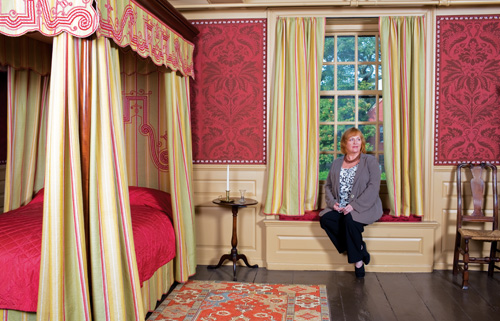Author Brunonia Barry has lived all over the country, but when it came to writing her New York Times best-selling novel, The Lace Reader (recently released in paperback), only Salem would do for influence and inspiration. The same is true for her next novel, The Map of True Places.
“The title comes from a Melville quote, and it has a lot of Hawthorne and Melville in it,” says Barry of her second novel which is due out in July. “I got to write some of my draft at the House of Seven Gables, which is like having a research team right there for me. Salem is a world of treasure and danger and surrealism. It’s where I feel comfortable.”
Barry grew up in Marblehead, but has lived in Vermont, New Hampshire, Los Angeles, Dublin, Manhattan, and Chicago. It was when she returned to the North Shore that her storytelling gears started turning. She was determined to write a “heroic journey story for women,” she explains, and when she arrived in Salem, Barry knew she had found the perfect setting. “You see a place with new eyes after not living there for a while. I don’t think I’ll ever leave,” she says.
Barry describes Salem residents in The Lace Reader as “quirky,” which she thinks applies to most New Englanders. “People from the North Shore have a seafaring mentality. It’s in our DNA at this point. Everything is marked by seasons, and you’re aware of time here differently than in other parts of the world.” Time is important to writers, particularly novelists. It took Barry seven years to finish The Lace Reader, and her creative process was influenced both by her locale and her state of mind, depending on the time of day.
When she’s writing new material-typically at 3am-Barry doesn’t like to be wide awake. “I need to be in a dream state-it’s more receptive somehow. But when I’m editing, I need to have my caffeine. If I’m on caffeine while I write new material, I’m refining things before I even get them down on paper. Creativity is messy. To get it down on paper for the first time, you have to let it go a little bit.”
To help with her creative process, Barry frequents two coffee shops in Salem: Starbucks and local haunt Jaho Coffee & Tea. She does, however, admit to having a secret calling for Newburyport. “In a certain sense, I feel like most of New England is one big undiscovered place,” she says. “There are little treasures everywhere. I did the Newburyport Literary Festival there, and I was like, ‘I could live here.'”
The Stories of Salem
Catch up on your Witch City history with these novels.
1. The Scarlet Letter by Nathaniel Hawthorne (1850) Sure, it’s the obvious choice, but where else can you get themes of legalism, sin, and guilt all in one classic novel?
2. The Heretic’s Daughter by Kathleen Kent (2008) Kent’s debut novel is told from the viewpoint of the 10-year-old daughter of one of the first women accused, tried, convicted, and hung during the Salem witch trials.
3. The Good Thief by Hannah Tinti (2008) This Salem native writes of the fictional town of North Umbrage, set in Colonial New England. But with grave-robbing, Indian attacks, and a harsh Catholic orphanage adding excitement to this piece, one can’t help but assume that Tinti’s Salem roots strongly influenced this tale.
4. The Physick Book of Deliverance Dane by Katherine Howe (2009) Author Katherine Howe draws from her own personal history (two of her ancestors were persecuted in the Salem witch trials) to write these complex chapters that dance between the summer of 1991 in Salem and the 17th-century witch trial period. -Sarah A. Ditkofff, photograph by Jared Charney

